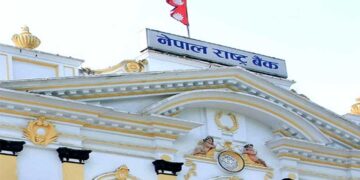Nepal’s consumer price inflation dropped to 1.87 percent as of mid-September 2025, a significant moderation compared to 3.86 percent in the same period of the last fiscal year (FY), according to the latest ‘Current Macroeconomic and Financial Situation Report’ released by the Nepal Rastra Bank (NRB) on Tuesday.
The report shows that by the end of the second month of the current FY, the inflation rate was nearly half of what it was during the same period in FY 2024/25. The central bank attributed the decline primarily to a slowdown in the price hike of food items.
According to the NRB, the food and beverage price index fell by 1.34 percent, compared to a 5.06 percent increase in the corresponding period last year. Conversely, non-food and service inflation rose slightly to 3.70 percent, up from 3.19 percent a year ago.
Within the food and beverage category, the year-on-year (y-o-y) price index for ghee and oil increased 11.09 percent, non-alcoholic drinks rose 3.97 percent, and milk products and eggs climbed 2.66 percent. In contrast, prices for vegetables dropped 12.74 percent, spices declined 6.31 percent, and pulses and legumes fell 3.58 percent.
Under the non-food and services category, the price index for miscellaneous goods and services surged 11.77 percent, education rose 7.67 percent, clothes and footwear increased 6.29 percent, tobacco products went up 4.84 percent, and furnishing and household equipment rose 4.55 percent, while insurance and financial services declined slightly by 0.22 percent.
Province-wise, inflation stood at 2.99% in Koshi, 1.74% in Madhesh, 1.72% in Bagmati, 1.47% in Gandaki, 1.76% in Lumbini, 1.85% in Karnali, and 0.88% in Sudurpashchim.
Regionally, the consumer price inflation in the Kathmandu Valley was 2.21%, followed by 2.51% in the Mountain region, 1.70% in the Terai, and 1.68% in the Hill region as of mid-September 2025.










